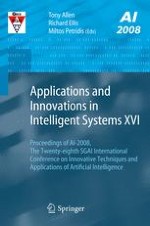Swallowing sound recognition is an important task in bioengineering that could be employed in systems for automated swallowing assessment and diagnosis of abnormally high rate of swallowing (aerophagia) [1], which is the primary mode of ingesting excessive amounts of air, and swallowing dysfunction (dysphagia) [2]-[5], that may lead to aspiration, choking, and even death. Dysphagia represents a major problem in rehabilitation of stroke and head injury patients. In current clinical practice videofluoroscopic swallow study (VFSS) is the gold standard for diagnosis of swallowing disorders. However, VFSS is a ti- consuming procedure performed only in a clinical setting. VFSS also results in some radiation exposure. Therefore, various non-invasive methods are proposed for swallowing assessment based on evaluation of swallowing signals, recorded by microphones and/or accelerometers and analyzed by digital signal processing techniques [2]-[5]. Swallowing sounds are caused by a bolus passing through pharynx. It is possible to use swallowing sounds to determine pharyngeal phase of the swallow and characteristics of the bolus [2].
